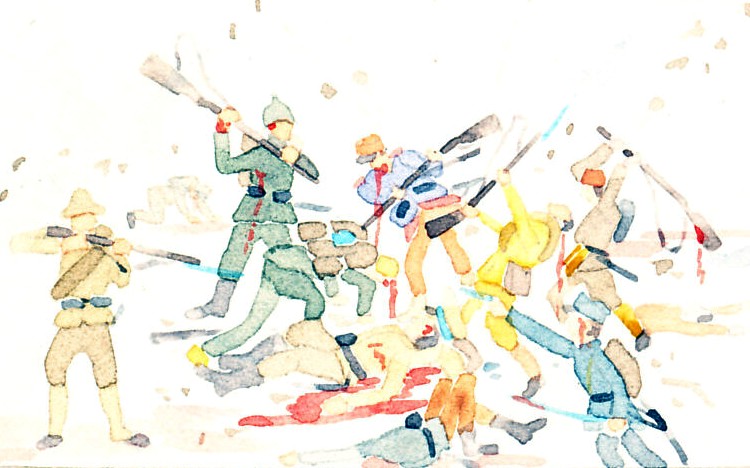Leaders of the first six Allies: King Peter of Serbia, King George V of Great Britain, President Poincaré of France, Tsar Nicholas II of Russia, King Albert of Belgium, and Nicholas of Montenegro.

1914 Conflit Europeen 1914
S. M. Pierre I, Roi de Serbie; S. M. George V, Roi d'Angleterre; M. Poincaré, President de la République Français; S. M. Nicolas, Roi de Montenegro; S. M. Nicholas II, Empereur de Russie, S. M. Albert I, Roi des Belges
E. LE Delev, Imp. Edit. 127, Boul. de Sebastopol, Paris
Logo: ELD
His Majesty Peter I, King of Serbia; His Majesty George V, King of England; Monsieur Poincaré, President of the French Republic; His Majesty Nicolas, King of Montenegro; His Majesty Nicholas II, Emperor of Russia, His Majesty Albert I, King of the Belgians
Other views:
Larger, Larger
